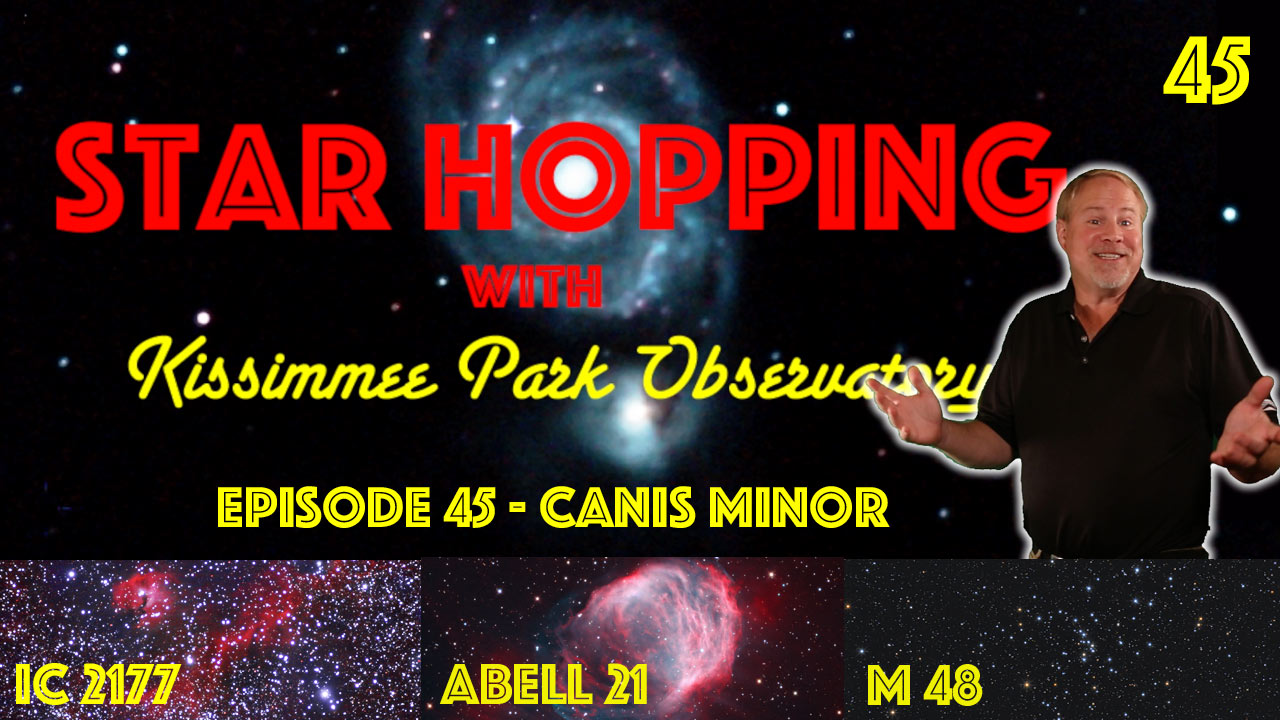In Episode SH045 of Star Hopping…
We’ll examine the Canis Minor region, and show you how to find three great deep sky targets: the Seagull Nebula (IC 2177), the Medusa Nebula (Abell 21), and the lost Messier Open Star Cluster, M48.
As mentioned in the episode, the holiday season is upon us! See our “Telescopes for Beginners” series at episodes SH007 and SH008 if you are interested in buying a telescope for a beginning amateur astronomer (of any age!).
Intro
As we are approaching the holiday season, I wanted to revisit my two episode series “Telescopes for Beginners”, in episodes 7 and 8 of Star Hopping. I was going to do a 2016 Update, but when I reviewed the content, I found it still applies this year. All the telescopes I recommended are still available at Orion Telescope Center. So if you are looking at buying a telescope for a beginning amateur astronomer, check out those two episodes (see links above).
Who Let the Dogs out?
Tonight on Star Hopping we’re continuing to locate some deeper deep sky objects. As the Winter stars begin their ascension into the eastern sky, we’re seeing the constellations of Gemini, Orion, Canis Major, and Canis Minor appear. The latin term “Canis” means Dog, and we are familiar with Canis Major, with it’s top dog star Sirius, the brightest star in the sky. But there is another smaller dog running around up there in the area: Canis Minor, with it’s not-so-shabby 0 magnitude star Procyon lighting up the area.
I’ve heard many pronunciations of this star’s name – “Pro SIGH on” as I said a moment ago, “PRO See on”, a little different, and PRO Key on, the strangest pronunciation I have heard to be sure.
My favorite is “Pro SIGH on”, and I like the star so much I named my astronomy company after it; Procyon Systems. I used to make software and hardware systems for amateur astronomers years ago. Now I just make Star Hopping videos for you to enjoy. But I digress – back to Canis Minor.
Canis Minor is a fairly small constellation, consisting of only two stars: Procyon, and 3rd magnitude Gomiesa. Within the borders of the constellation you can find only a few very faint galaxies, but in the surrounding area there are tons of great targets.
We’ll check out the first one, a large nebula, right after this message…
CLICK >>> Watch this Episode on YouTube!
Let us know your Questions and Comments!
Please feel free to leave a question or comment below, and we will respond as quickly as we can. You can also reach out to Dave on Twitter @StarHoppingMan.
Connect with Star Hopping!
We would love to have you join us on our various social media sites, and subscribe to our newsletter. Visit our Contact page to connect with us!
Credits for this Episode
- Star Chart Images & Simulations Courtesy of SkySafari Astronomy http://SkySafariAstronomy.com.
- Seagull Nebula image by Dave Hearn / Kissimmee Park Observatory
- Medusa Nebula image by Ken Crawford / Rancho del Sol Observatory
- M48 image by Siggi Kohlert


